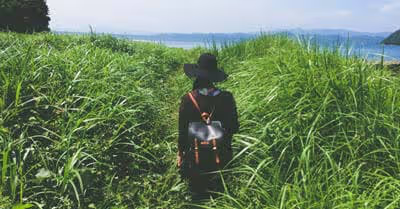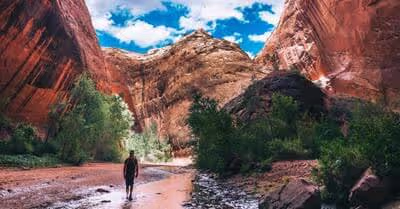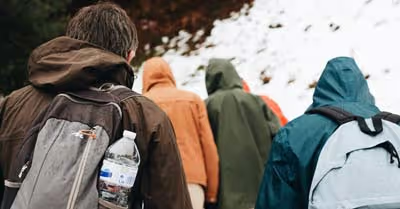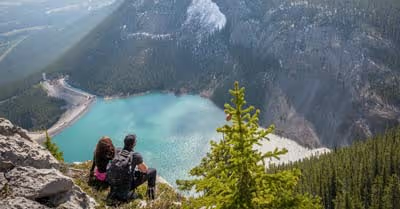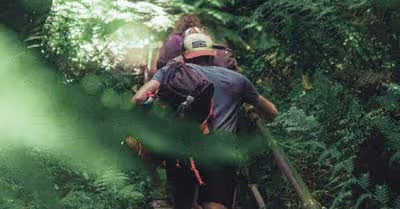Table of Contents
How To Prevent Hiking Blisters?
- Wearing Properly Fitted Shoes
Take time to research and find the right hiking boots that fit correctly. The shoes should have adequate room for the toes to wiggle while at the same time ensuring the heel doesn’t lift when walking. If your boots are somehow big and you’re not in a position to get ones that fit correctly, then you can try insoles as they tend to provide more cushion when hiking.
- Invest in Good Socks
When hiking, feet are likely too sweet and rub against the shoe. It’s thus recommended to invest in breathable socks that will help your feet to stay dry and warm whenever you’re hiking.
- Clean Your Feet
Maintaining your feet clean is very important as it lowers the chances of developing sores, which result from dust and trash while at the same time reducing the possibilities of blisters infection. Take time to wash your feet in cold water and clean them once you are done with hiking. When hiking in wet and rainy conditions, it’s necessary to ensure your legs are clean and moisture-free in the course of the night to give room for the skin to heal.
- Switch Your Socks Often
When heading out for a hike, it’s good to carry with you two or more pairs of hiking socks to rotate and get the opportunity to clean and dry the other pair to be used later. Hikers should a big safety pin snipped to their backpacks to guard socks so that they can dry while they are on a hike. Wearing tidy socks will make your feet healthy, comfortable, and free from blisters.
- Fix Your Laces
It’s crucial first to fix your shoelaces to suit the terrain you are about to use to ensure your feet in good condition. There are times we neglect to lace our boots tightly to give room for the swelling of feet to create comfort needed. But whenever the terrain is steep, we tend to harden our laces to the point where the ankle meets the foot to ensure our toes don’t hit the front of our boots.
- Create Time to Refresh Your Feet
Removing boots and socks during breaks does not only allow your feet to refresh and feel good but also preventing the occurrence of blisters. Although it requires time, it’s worth to give room for your skin breath and socks to dry. Whenever you are having a long break, it’s essential to take off shoes as well as socks. Always remember to elevate your feet using your pack to bolster them up as it helps to minimize the swelling rate and also the time taken for the lower parts of the body to recover to fullness. This also presents the opportunity to do away with dirt that may found its way into your boots and examine your legs for blister spots.
- Get Used to New Footwear
If you’re looking forward to wearing new boots on your hike, it’s essential to get used to them before you head out for this exercise. New boots sometimes can be somehow rigid, and in case, there are areas of friction or pressure, it’s necessary to rectify them from the comfort of your home and make the required changes. By wearing such boots before you head out for a hike, your feet tend to conform to your boots, creating the needed comfort. If you are to use old boots, ensure their sole is in good condition to support the feet.
Common Causes of Blisters
When hiking, boots and socks tend to rub against your feet, causing the thick skin outer layers to stretch more than the sensitive inner layers of the skin, resulting in their separation. This leads to the formation of a hotspot. Continued rubbing fills the fluid between the two skin layers forming a blister. The presence of moisture speeds up this process.
- Moisture
Exposure to water or moisture for a prolonged period makes the skin soft and vulnerable to blistering. Whenever your feet get wet, it’s necessary to dry them immediately alongside your socks and boots before you move on. Dry feet are more comfortable and healthy.
- Debris
Debris forms a breeding ground for blisters, and that’s why it’s essential to take off your boots and socks whenever you suspect that they have found their way into your shoes. Getting rid of debris and wearing clean socks ensures there is no room for blisters to occur.
- Unfitted Hiking Boots
Wearing hiking boots that don’t fit properly on your feet is one of the leading causes of blisters. A hiking boot that’s too big causes a nasty heel blister. In most cases, hikers who wear structured shoes are more vulnerable to nasty heel blister, especially if they are not correctly fitted.
Regrettably, most shoe retailers are not well-informed about what it takes to realize proper fit and are not aware of the degree of fitness among the various types of boots. Hikers wearing too-large boots on their feet are susceptible to heel blisters, which occur as a result of heel slippage and constant rubbing of the skin. This problem tends to be worse to hikers with stiff boots, especially for high mountain uses. At times, this issue can be remedied with an extra pair of socks. The most appropriate way to get rid of this problem is to acquire correctly fitted boots.
- Wrong Choice of Socks
The wrong choice of hiking socks is one of the causes of blisters among the hikers. Sticking to quality hiking socks can help you to prevent the occurrence of blisters. You have to be very careful when it comes to choosing the right hiking socks. Always go for ones that are made by a hiking company that you can easily trace. The materials used in the making of hiking socks are synthetic and wool, though there are manufacturers using cotton to make socks resembling the hiking ones, which is not recommended. The good thing about hiking socks made from wool or synthetic materials is that they don’t absorb moisture, and this keeps the feet dry. Quality hiking socks create comfort in your feet, thereby protecting them from blisters.
- Failure to manage toenails appropriately
Before you wear hiking shoes, remember to properly trim your toenails as this will bring comfort and minimize the chances of blisters forming.
- Lacing Inappropriately
Failure to lace your boots accordingly is equivalent to not realizing the much-needed fitting. It’s nearly impossible to attain the much-needed fitting whenever boots are loosely laced. Loose lacing is known to cause heel slippage, which can cause blisters.
- Using boots for a different purpose other than the intended one
All boots aren’t designed for the same purpose, and that’s why it’s essential to use them based on their area of application to avoid causing harm to yourself. Choosing the right hiking boots comes with several advantages in that they are waterproof,
How to Treat Hiking Blisters?
Have a Blister First Aid Kit in Place
Having a blister first aid kit in place is very important as it can help you to deal with emergencies while on a hike. If you discover you have a hot spot or full-blown blister, then it’s time to use your first aid kit to treat it. This also allows you to address any hot spots that may arise while hiking.
A blister first aid kid should comprise of the following
- Tweezers
- Scissors
- Additional alcohol wipes
- Antibiotic ointment
- Waterproof bandages
- Moleskin
A hotspot is an antecedent of a blister and a cautioning sign that things are not about to worsen. Most people have experienced sudden discomfort, heat, and annoyance out on the trail and have kept on moving. Rather than keep on pushing with a hotspot, it’s good to have a stop and get it addressed.
Always use a piece of moleskin to treat a hotspot to build a protective and long-lasting layer of skin in between the foot and the shoe.
Waterproof bandage and ointment are designed to guarantee the safety of your foot. If, for instance, your blister is too big and keeps on popping as you walk, get the job done immediately and make use of a sterilized safety pin smeared with alcohol from your kit and utilize it to pop the blister with no dangers of infection. Use an alcohol wipe to clean the affected area, and after that, apply ointment. Use a large bandage to cover the area you have treated.
When once done with hiking, remove the bandage and ensure the area is not covered once you get into the bed to give room for the blister to breathe while you sleep. Early detection is the secret to preventing the blister from getting worse.
Recent Articles



